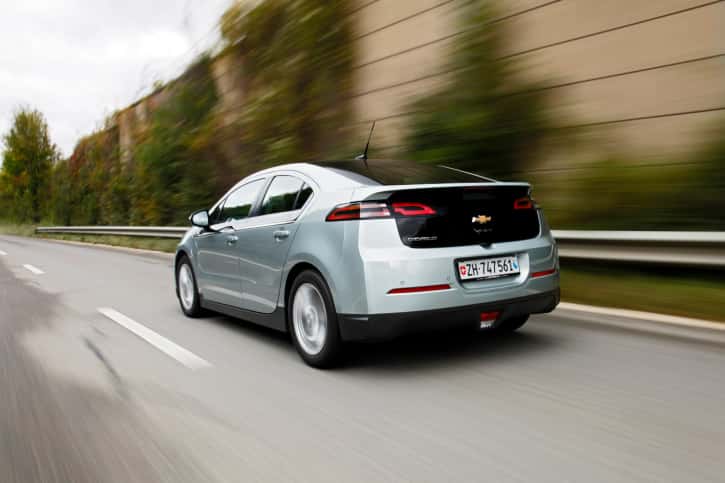A major concern for many would-be buyers of electric and plug-in hybrid vehicles is the potential lifespan of the expensive lithium-ion batteries. Some electric vehicles (EVs), such as the Nissan LEAF, have been subject to premature capacity loss in the battery pack, resulting in a shortened maximum range. However, one owner of a 2012 Chevy Volt has driven his plug-in hybrid over 300,000 miles with no signs of battery degradation, according to Green Car Reports.
Owned by Eric Belmer, the 2012 Chevy Volt still offers the 35 miles of electric driving range it left the factory with despite driving about 6,500 miles per month. Belmer claims to have covered approximately one-third of his driving using just electricity – about 103,000 miles. Yet, the Volt’s battery pack remains at its full capacity.
Why? The simple reason is that GM over-engineered the Volt’s 16 kWh lithium-ion battery, only allowing the vehicle to draw on 10 kWh at most. This leaves a tremendous buffer for both charging and discharging, the two most common culprits of premature capacity loss.
Another factor in the Volt’s longevity is the liquid-cooling system in the battery pack. Unlike the Nissan LEAF, which relies on forced air to cool its battery, the Volt has an extensive (and expensive) liquid-cooling system that keeps the battery at optimal temperatures. This helps preserve battery life, allowing Volt owners like Belmer to run up the odometer without the loss of electric driving range.
The 2017 Chevy Volt recently entered production with a larger 18.4 kWh battery pack and an estimated 53 miles of electric driving range.








IS THERE A WAY TO RECONDITION THE MAIN BATTERY PACK ON A 2012 CHEVY VOLT. IT SEEMS IN COLD COLD WEATHER I LOOSE 5MILES OF ELECTRIC TO ONE MILE DRIVEN.
Have you tried starting off in Hold mode (not sure if the 2012 model has it) to let the vehicle warm up before switching back to electric?
Okay, so he paid for a 16 kWh battery that will never let him use more than 63% of it’s capacity? Can anybody say class action lawsuit for false advertising? I ran into a lady with a Nissan Leaf last week with 88,000 miles on it. She’s lost 3% battery capacity, but she said she uses a 30 minute fast charger whenever possible. My wife works with a guy with over 111,000 miles (as of Christmas last year). He charges at home and at work every day. He’s lost about 12% capacity. I can’t imagine actually knowingly driving a car… Read more »
Yes you are
Tyler, you are missing something indeed. Deep discharge and full recharge damage a battery’s chemistry and shorten its life. The Volt battery sacrifices extreme mileage for longevity and this has been known for some time.
A brand new 12011-2015 Volt will have approx. 16 KWH of energy and GM lets you use only 10.6. This is because as the battery ages and its max energy dwindles down, it will hit 10.6 KWH and the owner will then use the entire capacity of the aging battery.
GM was always upfront about the amount kWh available, in fact the console shows it right on the screen.
GM marketed the Volt with a 35-mile electric driving range. How is that false advertising? The Nissan LEAF can only use about 21 kWh of its 24 kWh battery capacity, the Tesla Model S generally only uses 76 kWh of its 85 kWh, and the Toyota RAV4 could only tap about 41 kWh of its 50 kWh capacity. Engineers do this because completely draining ANY battery has major negative ramifications for battery longevity and capacity loss. Have you ever completely drained a regular lead-acid car battery and found it suddenly unable to hold any charge? The same idea is in… Read more »